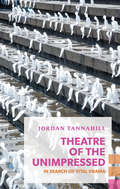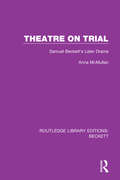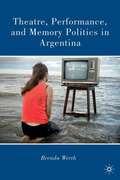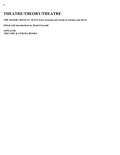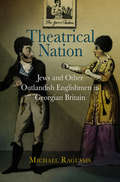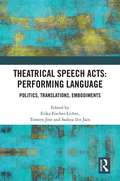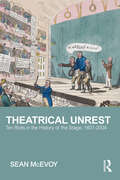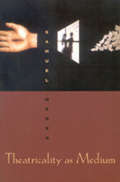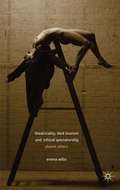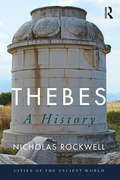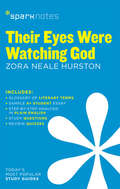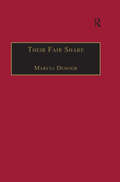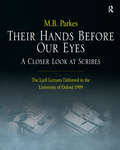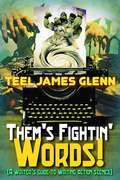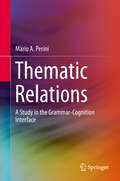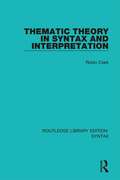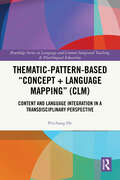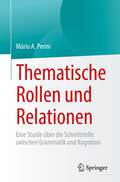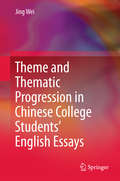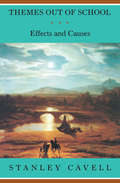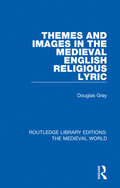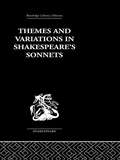- Table View
- List View
Theatre of the Unimpressed
by Jordan TannahillA lot of plays are bad. And one bad play, it seems, can turn us off theater for good. So, what can we learn from the bad play? Jordan Tannahill, after talking to theater heavy-hitters from Australia to Berlin, offers a roadmap for a renewed theater, one that is less insular, less insulting, with better infrastructure. In reconsidering dramaturgy, programming strategies, and alternative models for producing, he aims to turn theater from an obligation to a destination.Jordan Tannahill is a multidisciplinary artist based in Toronto. His production of Sheila Heti's All Our Happy Days Are Stupid will be performed in New York in 2015.
Theatre of the Unimpressed
by Jordan TannahillHow dull plays are killing theatre and what we can do about it. Had I become disenchanted with the form I had once fallen so madly in love with as a pubescent, pimple-faced suburban homo with braces? Maybe theatre was like an all-consuming high school infatuation that now, ten years later, I saw as the closeted balding guy with a beer gut he'd become. There were of course those rare moments of transcendence that kept me coming back. But why did they come so few and far between? A lot of plays are dull. And one dull play, it seems, can turn us off theatre for good. Playwright and theatre director Jordan Tannahill takes in the spectrum of English-language drama - from the flashiest of Broadway spectacles to productions mounted in scrappy storefront theatres - to consider where lifeless plays come from and why they persist. Having travelled the globe talking to theatre artists, critics, passionate patrons and the theatrically disillusioned, Tannahill addresses what he considers the culture of 'risk aversion' paralyzing the form. Theatre of the Unimpressed is Tannahill's wry and revelatory personal reckoning with the discipline he's dedicated his life to, and a roadmap for a vital twenty-first-century theatre - one that apprehends the value of 'liveness' in our mediated age and the necessity for artistic risk and its attendant failures. In considering dramaturgy, programming and alternative models for producing, Tannahill aims to turn theatre from an obligation to a destination. '[Tannahill is] the poster child of a new generation of (theatre? film? dance?) artists for whom "interdisciplinary" is not a buzzword, but a way of life.'- J. Kelly Nestruck, The Globe and Mail 'Jordan is one of the most talented and exciting playwrights in the country, and he will be a force to be reckoned with for years to come.'- Nicolas Billon, Governor General's Award-winning playwright (Fault Lines)
Theatre on Trial: Samuel Beckett's Later Drama (Routledge Library Editions: Beckett #5)
by Anna McMullanThis book, first published in 1993, is the first full-length analysis of Samuel Beckett’s later drama in the context of contemporary critical and performance theory. It employs a close, textual examination of the later plays as a springboard for exploring ideas around authority, gender and the ideology of performance. Recent work in the world of critical theory has suggested new ways of looking at performance practice. McMullan argues that, while contemporary theory can deepen our understanding of Beckett’s dramatic practice, his drama places performance in the context of a metaphysical history and a metatheatrical tradition, thereby confronting and provoking some of the central debates in performance studies’ engagement with critical theory.
Theatre, Magic and Philosophy: William Shakespeare, John Dee and the Italian Legacy (Anglo-Italian Renaissance Studies)
by Gabriela Dragnea HorvathAnalyzing Shakespeare's views on theatre and magic and John Dee's concerns with philosophy and magic in the light of the Italian version of philosophia perennis (mainly Marsilio Ficino, Pico della Mirandola and Giordano Bruno), this book offers a new perspective on the Italian-English cultural dialogue at the Renaissance and its contribution to intellectual history. In an interdisciplinary and intercultural approach, it investigates the structural commonalities of theatre and magic as contiguous to the foundational concepts of perennial philosophy, and explores the idea that the Italian thinkers informed not only natural philosophy and experimentation in England, but also Shakespeare's theatre. The first full length project to consider Shakespeare and John Dee in juxtaposition, this study brings textual and contextual evidence that Gonzalo, an honest old Counsellor in The Tempest, is a plausible theatrical representation of John Dee. At the same time, it places John Dee in the tradition of the philosophia perennis-accounting for what appears to the modern scholar the conflicting nature of his faith and his scientific mind, his powerful fantasy and his need for order and rigor-and clarifies Edward Kelly's role and creative participation in the scrying sessions, regarding him as co-author of the dramatic episodes reported in Dee's spiritual diaries. Finally, it connects the Enochian/Angelic language to the myth of the Adamic language at the core of Italian philosophy and brings evidence that the Enochian is an artificial language originated by applying creatively the analytical instruments of text hermeneutics used in the Cabala.
Theatre, Performance, and Memory Politics in Argentinay
by Brenda WerthSince Argentina's transition to democracy, the expression of human fragility on the stage has taken diverse forms. This book examines the intervention of theatre and performance in the memory politics surrounding Argentina's return to democracy and makes a case for performance's transformative power.
Theatre/Theory/Theatre: The Major Critical Texts From Aristotle and Zeami to Soyinka and Havel (Applause Books)
by Daniel GerouldFrom Aristotle's Poetics to Vaclav Havel, the debate about the nature and function of theatre has been marked by controversy. Daniel Gerould's landmark work, Theatre/Theory/Theatre, collects history's most influential Eastern and Western dramatic theorists—poets, playwrights, directors and philosophers—whose ideas about theatre continue to shape its future. <p><p>In complete texts and choice excerpts spanning centuries, we see an ongoing dialogue and exchange of ideas between actors and directors like Craig and Meyerhold, and writers such as Nietzsche and Yeats. Each of Gerould's introductory essays shows fascinating insight into both the life and the theory of the author. From Horace to Soyinka, Corneille to Brecht, this is an indispensable compendium of the greatest dramatic theory ever written.
Theatrical Nation
by Michael RagussisPerhaps the most significant development of the Georgian theater was its multiplication of ethnic, colonial, and provincial character types parading across the stage. In Theatrical Nation, Michael Ragussis opens up an archive of neglected plays and performances to examine how this flood of domestic and colonial others showcased England in general and London in particular as the center of an increasingly complex and culturally mixed nation and empire, and in this way illuminated the shifting identity of a newly configured Great Britain.In asking what kinds of ideological work these ethnic figures performed and what forms were invented to accomplish this work, Ragussis concentrates on the most popular of the "outlandish Englishmen," the stage Jew, Scot, and Irishman. Theatrical Nation understands these stage figures in the context of the government's controversial attempts to merge different ethnic and national groups through the 1707 Act of Union with Scotland, the Jewish Naturalization Bill of 1753, and the Act of Union with Ireland of 1800.Exploring the significant theatrical innovations that illuminate the central anxieties shared by playhouse and nation, Ragussis considers how ethnic identity was theatricalized, even as it moved from stage to print. By the early nineteenth century, Anglo-Irish and Scottish novelists attempted to deconstruct the theater's ethnic stereotypes while reimagining the theatricality of interactions between English and ethnic characters. An important shift took place as the novel's cross-ethnic love plot replaced the stage's caricatured male stereotypes with the beautiful ethnic heroine pursued by an English hero.
Theatrical Speech Acts: Politics, Translations, Embodiments
by Erika Fischer-Lichte Torsten Jost Saskya Iris JainTheatrical Speech Acts: Performing Language explores the significance and impact of words in performance, probing how language functions in theatrical scenarios, what it can achieve under particular conditions, and what kinds of problems may arise as a result. Presenting case studies from around the globe—spanning Argentina, Egypt, Germany, India, Indonesia, Korea, Kenya, Nigeria, Rwanda, Thailand, the UK and the US—the authors explore key issues related to theatrical speech acts, such as (post)colonial language politics; histories, practices and theories of translation for/in performance; as well as practices and processes of embodiment. With scholars from different cultural and disciplinary backgrounds examining theatrical speech acts—their preconditions, their cultural and bodily dimensions as well as their manifold political effects—the book introduces readers to a crucial linguistic dimension of historical and contemporary processes of interweaving performance cultures. Ideal for drama, theater, performance, and translation scholars worldwide, Theatrical Speech Acts opens up a unique perspective on the transformative power of language in performance.
Theatrical Unrest: Ten Riots in the History of the Stage, 1601-2004
by Sean McEvoyShortlisted for the 2017 Theatre Book Prize What is it about theatre, compared to other kinds of cultural representation, which provokes such a powerful reaction? Theatrical Unrest tells the compelling tales of ten riots whose cause lies on stage. It looks at the intensity and evanescence of the live event and asks whether theatre shares its unrepeatable quality with history. Tracing episodes of unrest in theatrical history from an Elizabethan uprising over Shakespeare's Richard II to Sikhs in revolt at Gurpreet Kaur Bhatti's Behzti, Sean McEvoy chronicles a selection of extreme public responses to this inflammatory art form. Each chapter provides a useful overview of the structure and documentation of one particular event, juxtaposing eyewitness accounts with newspaper reports and other contemporary narratives. Theatrical Unrest is an absorbing account of the explosive impact of performance, and an essential read for anyone interested in theatre’s often violent history.
Theatricality as Medium
by Samuel WeberEver since Aristotle's Poetics, both the theory and the practice of theater have been governed by the assumption that it is a form of representation dominated by what Aristotle calls the "mythos," or the "plot." This conception of theater has subordinated characteristics related to the theatrical medium, such as the process and place of staging, to the demands of a unified narrative. This readable, thought-provoking, and multidisciplinary study explores theatrical writings that question this aesthetical-generic conception and seek instead to work with the medium of theatricality itself. Beginning with Plato, Samuel Weber tracks the uneasy relationships among theater, ethics, and philosophy through Aristotle, the major Greek tragedians, Shakespeare, Kierkegaard, Kafka, Freud, Benjamin, Artaud, and many others who develop alternatives to dominant narrative-aesthetic assumptions about the theatrical medium. His readings also interrogate the relation of theatricality to the introduction of electronic media. The result is to show that, far from breaking with the characteristics of live staged performance, the new media intensify ambivalences about place and identity already at work in theater since the Greeks. Praise for Samuel Weber: “What kind of questioning is primarily after something other than an answer that can be measured . . . in cognitive terms? Those interested in the links between modern philosophy nd media culture will be impressed by the unusual intellectual clarity and depth with which Weber formulates the . . . questions that constiture the true challenge to cultural studies today. . . . one of our most important cultural critics and thinkers”—MLN
Theatricality, Dark Tourism and Ethical Spectatorship
by Emma WillisTheatricality, Dark Tourism and Ethical Spectatorship: Absent Others builds upon recent literature concerning theatre and ethics and offers a uniquely interdisciplinary approach. With a focus on spectatorship, the book brings together analysis of dark tourism – travel to sites of death and disaster – and theatrical performances. At dark tourism sites, objects and architecture are often personified, imagined to speak on behalf of absent victims. Spectatorsare drawn into this dialogical scenario in that they are asked to 'hear' the voices of the dead. Theatrical performances that depict grievous histories often gain power through paradoxically demonstrating the limits of their representational ability: spectators are asked to attune themselves to absences and incomprehensibilities. This study asks whether playing the part of the listener can be understood in ethical terms. Sites surveyed span a broad geographical scope – Germany, Poland, Vietnam, Cambodia, New Zealand and Rwanda – and are brought into contrast with performances including: Jerzy Grotowski's Akropolis, Catherine Filloux's Photographs from S21, Adrienne Kennedy's An Evening with Dead Essex and Erik Ehn's Maria Kizito.
Thebes: A History (Cities of the Ancient World)
by Nicholas RockwellThebes offers a scholarly survey of the history and archaeology of the city, from 1600 BCE – 476 CE. Discussions of major developments in politics, war, society and culture form the basis of a chronological examination of one of Greece’s most powerful and dynamic cities. By taking a broad view, the book’s account speaks to larger trends in the ancient Mediterranean world while also demonstrating how Thebes was unique in its ancient context. It provides an up-to-date examination of all available information: topographic, demographic, numismatic, epigraphic, archaeological and textual discussions provide the most complete, current picture of ancient Thebes and illustrate the value of an interdisciplinary approach.
Their Eyes Were Watching God SparkNotes Literature Guide (SparkNotes Literature Guide Series #60)
by SparkNotesTheir Eyes Were Watching God SparkNotes Literature Guide by Zora Neale Hurston Making the reading experience fun! When a paper is due, and dreaded exams loom, here's the lit-crit help students need to succeed! SparkNotes Literature Guides make studying smarter, better, and faster. They provide chapter-by-chapter analysis; explanations of key themes, motifs, and symbols; a review quiz; and essay topics. Lively and accessible, SparkNotes is perfect for late-night studying and paper writing. Includes:An A+ Essay—an actual literary essay written about the Spark-ed book—to show students how a paper should be written.16 pages devoted to writing a literary essay including: a glossary of literary termsStep-by-step tutoring on how to write a literary essayA feature on how not to plagiarize
Their Fair Share: Women, Power and Criticism in the Athenaeum, from Millicent Garrett Fawcett to Katherine Mansfield, 1870–1920 (The Nineteenth Century Series)
by Marysa DemoorTheir Fair Share identifies and contextualises many previously unknown critical writings by a selection of well-known turn-of-the-century women. It reveals the networks behind an influential journal like the Athenaeum and presents a more shaded assessment of its position in the field of cultural production, in the period 1870-1920. The Athenaeum (1828-1921) has often been presented as a monolithic institution offering its readers a fairly conservative, male oriented appreciation of a wide variety of contemporary publications. On the basis of archival and biographical material this book presents an entirely new analysis of the reviewing policy of this weekly from 1870, when it came into the hands of the politician Sir Charles Wentworth Dilke, up to and including 1919-1920 when John Middleton Murry became its editor. Dilke, and his editor Norman MacColl, are here revealed to have been committed feminists who enlisted some of the most influential women of their time as critics for their journal. The book looks more specifically at the contributions by, a.o., Millicent Garrett Fawcett, Emilia Dilke, Jane Harrison and Augusta Webster.
Their Hands Before Our Eyes: The Lyell Lectures Delivered in the University of Oxford 1999
by M.B. ParkesThis new book by Malcolm Parkes makes a fundamental contribution to the history of handwriting. Handwriting is a versatile medium that has always allowed individual scribes the opportunity for self-expression, despite the limitations of the pen and the finite number of possible movements.The purpose of this study is to focus on the writing of scribes from late antiquity to the beginning of the sixteenth century, and to identify those features which are a scribe's personal contribution to the techniques and art of handwriting. The book opens with three chapters surveying the various environments in which scribes worked in the medieval West. The following five, based on the author's Lyell Lectures at the University of Oxford, then examine different aspects of the subject, starting with the basic processes of handwriting and copying. Next come discussions of developments in rapid handwriting, with its consequent influence on new alphabets; on more formal 'set hands'; and on the adaptation of movements of the pen to produce elements of style corresponding to changes in the prevailing sense of decorum. The final chapter looks at the significance of some customized images produced by handwriting on the page. The text is illustrated with 69 plates, and accompanied by a glossary of the technical terms applied to handwriting, which in itself makes a significant contribution to the subject.
Them's Fightin' Words
by Teel James GlennJoin professional fight choreographer Teel James Glenn as he takes you on a journey through the process of creating believable and dramatic action scenes in every kind offiction. Using wit and personal experience, he dissects action scenes for the keys to what makes them work. Readers benefit from his combat experience, including eastern martial arts, the physiology and kinetics of weight training and the dramatic story telling from film and stage acting. From fantasy swordfights, barroom brawls, comic combat to martial arts knockabouts, he not only outlines and explains the whys and wherefores of literary violence, he also explores techniques that allow you to create them yourself with a series of fun and easy to do exercises. He takes the mystery out of writing action, but not the excitement!
Thematic Relations: A Study in the Grammar-Cognition Interface
by Mário A. PeriniThis book presents a proposal to better define thematic relations by exploring the relation between language and cognition. It analyzes the relation between grammatically defined roles such as agent and patient (semantic roles), and elaborate thematic relations (ETRs) actually accessible to language users. It shows that many phenomena previously analyzed as grammatical can be described in a more simple and convenient way by postulating direct connection between syntactic complements and cognitive relations present in the schema evoked by the verb. The volume focuses on a topic which has been the object of much discussion in the recent literature, namely the definition and delimitation of semantic roles, proposing new solutions to some important theoretical and practical problems in the description of the lexicogrammatical structure of languages, and in particular of verb valency. It shows that in many cases a direct relation can be established between morphosyntactic units and functions, on one hand, and ETRs, on the other, without the intermediation of grammatically defined semantic roles. This makes it possible to analyze thematic relations that have been traditionally problematic, such as the patient, in a linguistically simple and cognitively well-motivated way. Thematic Relations – A Study in the Grammar-Cognition Interface will be a useful resource for practicing linguists working on the analysis of natural languages, in particular on verb valency; verb subcategorization and thematic structure; semantic (thematic) roles, their definition and syntactic coding; the relation between grammatical structure and cognitive schemata (frames); and the structure of the lexicon.
Thematic Structure and Para-Syntax: Arabic As A Case Study (Routledge Studies in Arabic Linguistics)
by James DickinsThematic Structure and Para-Syntax: Arabic as a Case Study presents a structural analysis of Arabic, providing an alternative to the traditional notions of theme and rheme. Taking Arabic as a case study, this book claims that approaches to thematic structure propounded in universalist linguistic theories, of which Hallidayan systemic functional linguistics is taken as an illustrative example, are profoundly wrong. It argues that in order to produce an analysis of thematic structure and similar phenomena which is not undermined by its own theoretical presuppositions, it is necessary to remove such notions from the domain of linguistic and semiotic theory. The book initially focuses on Sudanese Arabic, because this allows for a beautifully clear exposition of general principles, before applying these principles to Modern Standard Arabic, and some other Arabic varieties. This book will be of interest to scholars in Arabic linguistics, linguistic theory, and information structure.
Thematic Theory in Syntax and Interpretation (Routledge Library Editions: Syntax #6)
by Robin ClarkIn recent years, lexical argument structure, in the guise of thematic roles, has come to play an increasingly important part in syntactic theory. The first part of this book, first published in 1990, explores the interplay between thematic role assignment and movement processes, with particular reference to the explanatory problem of nominalisation. The second part explores the relationship between thematic roles and control. Particularly close attention is paid to implicit arguments, arbitrary control and adverbs of quantification. A theory of control is presented which unifies obligatory and non-obligatory control. The theory of control, furthermore, generalises to account for the binding gaps in purposive clauses, tough movement constructions, infinitival clauses and other constructions which have typically been analysed as involving long-distance dependencies. This title will be of interest to students of linguistics.
Thematic-Pattern-Based “Concept + Language Mapping”: Content and Language Integration in a Transdisciplinary Perspective (Routledge Series in Language and Content Integrated Teaching & Plurilingual Education)
by Peichang HeThis book explores the issue of “integration” in content and language integrated learning (CLIL), and addresses the need for effective content and language integration by proposing the thematic-pattern-based “Concept+Language Mapping” (CLM) approach.Peichang He explores effective integration of content and language learning during the instruction of content subjects using students’ additional language as the medium of instruction. The volume introduces the contextual background of a large-scale school-university collaboration CLIL research project and builds the conceptual framework of a thematic-pattern-based CLM pedagogy by drawing on the language-based theory of learning (Halliday, 1993), the construct of thematic patterns (Lemke, 1990), and the recent development of genre-based pedagogy (Lin, 2016; Rose & Martin, 2012). The research probes the design of thematic-pattern-based CLM teaching resources and examines the impact of the CLM pedagogy on students’ development of language and content knowledge during their learning of different junior and senior English Medium Instructed subjects. The author enhances the conceptual framework based on the ongoing research findings and the burgeoning literature on translanguaging practice (García & Li, 2014; Lemke & Lin, 2022; Lin, 2019) and proposes a trans-disciplinary plurilingual thematic-pattern-based CLM approach. The book concludes with a discussion on some promising future research orientations including a transdisciplinary plurilingual thematic-pattern-based CLM approach for CLIL sustainability, catering for learner diversity in CLIL, and teacher professional development in thematic-pattern-based CLM practice. The book shows readers the design of CLM materials and activities which are demonstrated through classroom interactions in lessons of different subjects and grades for students of diverse cognitive abilities and linguistic backgrounds.This insightful volume will be of interest to researchers and trainee teachers exploring pedagogical approaches to CLIL, plurilingual, and transdisciplinary education and will provide pedagogical implications for teachers of both language and content subjects in schools worldwide.
Thematische Rollen und Relationen: Eine Studie über die Schnittstelle zwischen Grammatik und Kognition
by Mário A. PeriniDieses Buch präsentiert einen Vorschlag zur besseren Definition thematischer Beziehungen, indem es die Beziehung zwischen Sprache und Kognition untersucht. Es analysiert die Beziehung zwischen grammatisch definierten Rollen wie Agent und Patient (semantische Rollen) und elaborierten thematischen Relationen (ETRs), die den Sprachbenutzern tatsächlich zugänglich sind. Es wird gezeigt, dass viele Phänomene, die zuvor als grammatikalisch analysiert wurden, auf einfachere und bequemere Weise beschrieben werden können, indem eine direkte Verbindung zwischen syntaktischen Ergänzungen und kognitiven Beziehungen, die in dem durch das Verb hervorgerufenen Schema vorhanden sind, postuliert wird. Der Band konzentriert sich auf ein Thema, das in der jüngeren Literatur viel diskutiert wurde, nämlich die Definition und Abgrenzung semantischer Rollen, und schlägt neue Lösungen für einige wichtige theoretische und praktische Probleme bei der Beschreibung der lexikogrammatischen Struktur von Sprachen und insbesondere der Verbvalenz vor. Es wird gezeigt, dass in vielen Fällen eine direkte Beziehung zwischen morphosyntaktischen Einheiten und Funktionen einerseits und ETRs andererseits hergestellt werden kann, ohne die Vermittlung von grammatisch definierten semantischen Rollen. Dadurch wird es möglich, traditionell problematische thematische Relationen, wie z.B. den Patienten, auf linguistisch einfache und kognitiv gut motivierte Weise zu analysieren. Thematische Beziehungen - Eine Studie über die Schnittstelle zwischen Grammatik und Kognition ist ein nützliches Hilfsmittel für Linguisten, die sich mit der Analyse natürlicher Sprachen beschäftigen, insbesondere mit der Valenz von Verben, der Subkategorisierung von Verben und der thematischen Struktur, den semantischen (thematischen) Rollen, ihrer Definition und syntaktischen Kodierung, der Beziehung zwischen grammatischer Struktur und kognitiven Schemata (Frames) und der Struktur des Lexikons.
Theme and Thematic Progression in Chinese College Students' English Essays
by Jing WeiThis book focuses on how instruction affects English learners' use of Theme and thematic progression (thematic organization). While thematic organization in learner English has been extensively studied, little research has been done to investigate the effects of instruction on the use of Theme and thematic progression. Adopting a Systemic Functional Grammar approach, this study explores how a ten-week instruction on thematic organization affects Chinese college students' use of Theme and thematic progression by comparing their English essays before and after the instruction, with native-speaker essays as the research baseline. Second-language acquisition researchers, curriculum developers and foreign language teachers will find this book useful as it not only presents a clear and detailed report of how Chinese college students learn to make better thematic choices, but also provides a well-developed instructional package on Theme and thematic progression.
Themes Out Of School: Effects and Causes
by Stanley CavellIn the first essay of this book, Stanley Cavell characterizes philosophy as a "willingness to think not about something other than what ordinary human beings think about, but rather to learn to think undistractedly about things that ordinary human beings cannot help thinking about, or anyway cannot help having occur to them, sometimes in fantasy, sometimes as a flash across a landscape. " Fantasies of film and television and literature, flashes across the landscape of literary theory, philosophical discourse, and French historiography give Cavell his starting points in these twelve essays. Here is philosophy in and out of "school," understood as a discipline in itself or thought through the works of Shakespeare, Molière, Kierkegaard, Thoreau, Brecht, Makavejev, Bergman, Hitchcock, Astaire, and Keaton.
Themes and Images in the Medieval English Religious Lyric (Routledge Library Editions: The Medieval World #15)
by Douglas GrayOriginally published in 1972, Themes and Images in the Medieval English Religious Lyric discusses themes and images in religious lyric poetry in Medieval English poetry. The book looks at the affect that tradition and convention had on the religious poetry of the medieval period. It examines the background of the lyrics, including the Latin tradition which was inherited by medieval vernacular and shows how religious lyric poetry presents, through a rich variety of images, the significant incidents in the scheme of Christ’s redemption, such as the Annunciation, the Nativity, the Passion and the Resurrection. It also considers the lyrics which were designed to assist humanity in the task of living in a Christian life, as well as those which prepared them for death.
Themes and Variations in Shakespeare's Sonnets
by J B LeishmanFirst published in 1961. This study analyses Shakespeare's treatment of the universal themes of Beauty, Love and Time. He compares Shakespeare with other great poets and sonnet writers - Pindar, Horace and Ovid, with Petrarch, Tasso and Ronsart, with Shakespeare's own English predecessors and contemporaries, notably Spenser, Daniel and Drayton and with John Donne. By discussing their resemblances and differences, a not altogether orthodox picture of Shakespeare's attitude to life is presented, which suggests that he was not as phlegmatic and equable a person as critics have often supposed.
